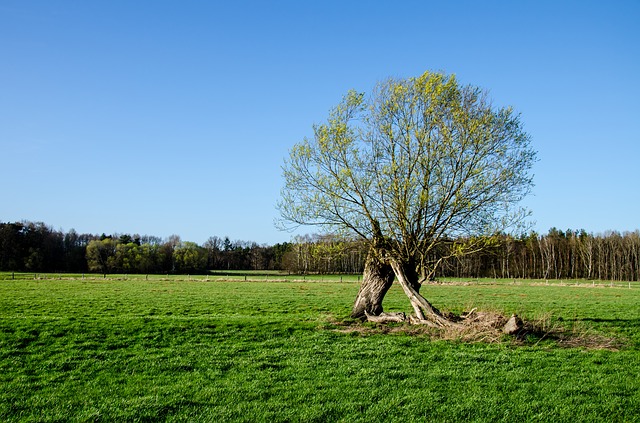Tree Fodder: Difference between revisions
Jump to navigation
Jump to search
mNo edit summary |
mNo edit summary |
||
| (One intermediate revision by the same user not shown) | |||
| Line 1: | Line 1: | ||
[[File:SpringMeadowWillow.jpg|thumb|right|640px|Meadow with willow tree.]] | [[File:SpringMeadowWillow.jpg|thumb|right|640px|Meadow with willow tree.]] | ||
Trees can be used as a great source of fodder for livestock. This may be especially suitable for areas that experience dry summers or droughts. Poplars and willows are most often used for this purpose and are often planted for other | Trees can be used as a great source of fodder for livestock. This may be especially suitable for areas that experience dry summers or droughts. Poplars and willows are most often used for this purpose, and are often planted for other reasons already, such as erosion control or shade. Both are eagerly eaten by cattle, goats, etc. Leaves may be rich in protein and trace elements. These trees can be pruned every other summer – and they should be regularly pruned anyway. Leftover branches are useful for various other purposes (e.g. [[Wood Chips|wood chips]], [[Biofuel|fuel]] or [[biochar]]). | ||
Related pages: [[Coppice]], [[Agroforestry]], [[Permaculture]] | Related pages: [[Coppice]], [[Agroforestry]], [[Permaculture]] | ||
Latest revision as of 23:34, 10 June 2017
Trees can be used as a great source of fodder for livestock. This may be especially suitable for areas that experience dry summers or droughts. Poplars and willows are most often used for this purpose, and are often planted for other reasons already, such as erosion control or shade. Both are eagerly eaten by cattle, goats, etc. Leaves may be rich in protein and trace elements. These trees can be pruned every other summer – and they should be regularly pruned anyway. Leftover branches are useful for various other purposes (e.g. wood chips, fuel or biochar).
Related pages: Coppice, Agroforestry, Permaculture
